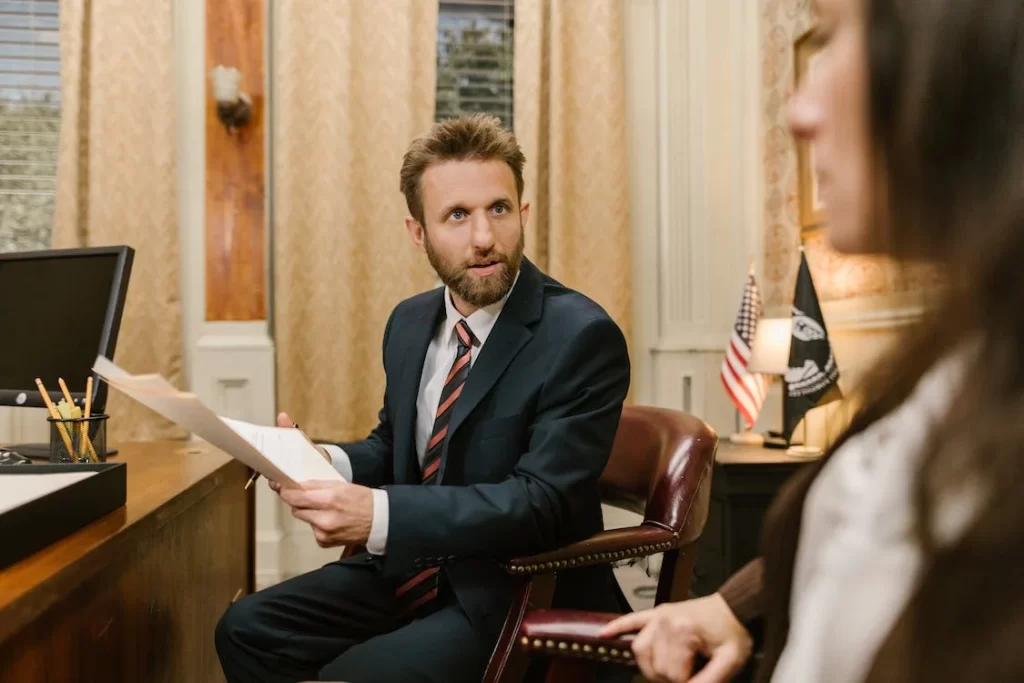Essential Guide to Chapter 13 Bankruptcy Idaho
Facing overwhelming debt in Idaho? Chapter 13 bankruptcy Idaho offers a way to reorganize your finances, keep your property, and repay your creditors over time. This guide explains how Chapter 13 bankruptcy works in Idaho, who qualifies, and the steps needed to file successfully. Dive in to understand how Chapter 13 can be your path to financial recovery.
Key Takeaways
- Chapter 13 bankruptcy, known as the ‘wage earner’s plan’, allows individuals with a steady income to retain their property and repay debts over three to five years instead of liquidating assets.
- Eligibility for Chapter 13 bankruptcy in Idaho requires a regular income, debt within prescribed limits, timely filed tax returns, and completion of a credit counseling course.
- The Chapter 13 bankruptcy process involves filing a bankruptcy petition, creating a repayment plan, undergoing a meeting of creditors, and obtaining a discharge of certain debts, all while benefiting from Idaho-specific asset exemptions.


Introduction
Embarking on a Chapter 13 bankruptcy in Idaho is akin to charting a course through a financial renaissance. Unlike the swift but often harsh resolution of a Chapter 7 bankruptcy, which liquidates assets to repay creditors, Chapter 13 offers a gentler approach, allowing debtors to retain their property and repay their debts over time.
Known colloquially as the ‘wage earner’s plan’, it is tailored for individuals with a steady income who seek to balance the scales of their financial situation without sacrificing their possessions. Let’s delve into the world of Chapter 13 bankruptcy and discover how it can be the key to unlocking a door to a debt-free future.
Understanding Chapter 13 Bankruptcy
Chapter 13 bankruptcy is not a one-size-fits-all solution; it’s an intricate tapestry woven from various legal strands, each designed to protect and serve the debtor’s interests. At its core, this form of bankruptcy is about reorganization and repayment, not liquidation. By filing a bankruptcy petition, individuals engage in a bankruptcy process that respects their efforts to maintain ownership of their cherished assets. The bankruptcy court oversees this process, ensuring that the bankruptcy trustee administers the debtor’s repayment plan fairly and that the remaining dischargeable debt is handled in accordance with the bankruptcy code.
Navigating through Chapter 13’s complexities requires a firm grasp of its fundamental principles. It’s a bankruptcy chapter that allows debtors to repay creditors over an extended period, typically three to five years, while keeping their financial affairs private and intact. The bankruptcy exemptions play a pivotal role here, safeguarding certain assets from becoming part of the bankruptcy estate.
As we explore further, you’ll gain a comprehensive understanding of how this bankruptcy works, and how filing for chapter 13 in Idaho can provide a structured path to financial recovery.
Eligibility Requirements for Chapter 13 Bankruptcy in Idaho
Before setting sail on the journey of Chapter 13 bankruptcy, it’s essential to ensure you are equipped with the right qualifications to navigate these waters. In Idaho, the eligibility requirements serve as the compass guiding you towards qualification. You must have a regular source of income to file bankruptcy under Chapter 13, illustrating the capability to meet monthly payments that chip away at your debt mountains. These payments are part of a tailored bankruptcy process that takes into account your unique financial situation.
Moreover, the debt landscape must fit within certain parameters:
- Secured and unsecured debts must not exceed the prescribed limits set forth by the bankruptcy code.
- A history of timely filed state and federal tax returns over the past four years is mandatory, serving as evidence of your fiscal responsibility.
- You must complete a credit counseling course before embarking on your bankruptcy filing—a prerequisite that prepares you for the financial restructuring ahead.
With these criteria met, you stand at the threshold of filing for chapter 13 bankruptcy, ready to reclaim your financial autonomy.
The Chapter 13 Bankruptcy Process in Idaho
- Filing a bankruptcy petition
- Creating a repayment plan
- Meeting of creditors
- Obtaining a discharge of certain debts
These milestones are important steps in the journey towards financial recovery and achieving a stable median income.
As we navigate through the next sections, we’ll dissect these steps, providing clarity on each phase of the process, ensuring that you, as a debtor filed under Chapter 13, are well-prepared for the path ahead.
Filing a Bankruptcy Petition
The first stride towards filing a bankruptcy petition is to partake in credit counseling. This preemptive measure, approved by the U.S. Trustee’s office, is vital in equipping you with the financial knowledge necessary for the journey ahead. Upon completing this counseling, it’s essential to gather your financial documents—bank statements, tax returns, and detailed lists of assets and debts. This compilation of information is the backbone of your bankruptcy filing, providing a transparent view of your financial affairs.
The bankruptcy petition is more than just a document; it’s a declaration of your intent to responsibly manage your debts. Alongside it, you’ll need to submit a proposed repayment plan that aligns with Idaho bankruptcy exemptions and is feasible within your financial situation. This plan will then be scrutinized during the meeting of creditors, a scenario that may seem daunting but is truly an opportunity to verify your commitment to rectifying your financial course. It’s a step that signifies your readiness to embark on the path of financial recovery.



Creating a Repayment Plan
Crafting a repayment plan is akin to designing a financial blueprint for the next three to five years. It’s a plan that must gain the approval of the bankruptcy court, showcasing your good faith effort to repay your creditors. This plan is a testament to your financial diligence, ensuring that unsecured creditors receive at least as much as they would in a Chapter 7 bankruptcy. It’s a balancing act, one that your bankruptcy trustee will oversee, ensuring that your disposable income is allocated appropriately.
Your repayment plan is a commitment, a promise to dedicate all disposable income towards the clearing of your debts. It’s a structured approach that allows for legal fees to be included within the plan, spreading the financial burden over time. This flexibility is one of Chapter 13’s hallmarks, as it coerces creditors into a payment plan and grants you additional time to repay balances. It’s not just about meeting obligations but doing so in a way that’s sustainable and respectful of your current financial situation.
Meeting of Creditors
The meeting of creditors, also known as a ‘341 meeting’, is a pivotal moment in the Chapter 13 bankruptcy process. Arranged approximately one month after your bankruptcy filing, this meeting is an assembly of the minds, where creditors have the opportunity to question you, under oath, about your financial affairs and proposed repayment plan. It’s a moment that demands honesty and transparency, reflecting your resolve to adhere to the bankruptcy code.
During this meeting, the bankruptcy trustee acts as an intermediary, facilitating the dialogue between you and your creditors. It’s a chance for creditors to probe into the details of your repayment plan, ensuring that their interests are protected. However, it’s also an opportunity for you to demonstrate your dedication to resolving your financial obligations. The outcome of this meeting influences the confirmation hearing, where the court will decide whether to approve your repayment plan. It’s a crucial step towards achieving the ultimate goal of bankruptcy discharge.

Idaho Bankruptcy Exemptions in Chapter 13

As you weave through the bankruptcy process, it’s important to understand the protections afforded to you by Idaho bankruptcy exemptions. These exemptions ensure that your journey through Chapter 13 bankruptcy doesn’t strip you of all your possessions. The homestead exemption, for instance, shields a significant portion of your home’s equity, offering solace that your sanctuary remains untouched. Similarly, up to $10,000 of your motor vehicle’s equity is safeguarded, ensuring that your means of transportation remains at your disposal.
Beyond the walls of your home and the confines of your vehicle, Idaho’s exemptions extend to the tools of your trade, treasured tangible personal property, and tax exempt retirement accounts. From household appliances to musical instruments, these exemptions recognize the intrinsic value and necessity of your possessions, allowing you to retain a semblance of normalcy as you work towards debt repayment. Even your hard-earned wages are protected, ensuring that your financial reset does not come at the cost of your livelihood. These exemptions are the shield that guards you against total asset forfeiture, providing a cushion as you strive to settle your debts.
Managing Secured and Unsecured Debts
In the realm of Chapter 13 bankruptcy, debts are categorized as either secured or unsecured, each requiring a unique strategy for management. Secured debts are anchored by collateral, such as a home or car, while unsecured debts, like credit card bills, do not have such backing. As you progress through the bankruptcy filing, a clear distinction in the treatment of these debts becomes apparent.
Your repayment plan is devised to satisfy secured creditors, while unsecured debts are approached differently, often with the potential for discharge.
Handling Secured Debt
Secured debt demands a strategic approach, as it involves property that creditors can claim if not repaid. Chapter 13 bankruptcy modifies the rights of secured creditors, allowing you to reshape the terms of repayment over the course of your plan. This can mean altering monthly payments or extending the repayment period, actions that must be sanctioned by the bankruptcy court. It’s a negotiation of sorts, one that aims to balance your financial capabilities with the creditors’ rights to repayment.
Chapter 13 bankruptcy offers several benefits for homeowners and those facing car repossession. Some of these benefits include:
- Filing a bankruptcy petition
- Creating a repayment plan
- Meeting of creditors
- Obtaining a discharge of certain debts
Discharging Unsecured Debts
While secured debts are tethered to tangible assets, unsecured debts float in a space where they are not backed by physical collateral. In Chapter 13 bankruptcy, these debts are addressed with any disposable income remaining after prioritizing secured creditors. Creditors of non-priority unsecured debts receive a pro-rata share of this income, which is distributed over the life of the repayment plan. This structured approach provides a roadmap for gradually extinguishing these obligations.
At the conclusion of a successfully executed repayment plan, Chapter 13 offers the sweet release of a bankruptcy discharge for any remaining unsecured debts. It’s a financial rebirth, liberating you from the chains of past due medical bills, credit card debt, and court judgments. This discharge is not just an end—it’s a new beginning, a testament to your commitment to financial responsibility and the fresh start that bankruptcy promises.
Benefits of Chapter 13 Bankruptcy in Idaho
- Preventing the foreclosure of your home
- Allowing you to catch up on missed mortgage payments under the protection of the bankruptcy court
- Providing a structure for repaying priority unsecured creditors, such as those owed child support or alimony, ensuring that they receive full repayment of their claims
Chapter 13 bankruptcy is akin to a financial lifeline, offering a second chance to those submerged in debt. It’s a pathway that not only preserves your home but also provides a structure for repaying priority unsecured creditors.
Chapter 13 bankruptcy is more than a legal process; it’s a journey of financial transformation that offers significant advantages over other forms of debt relief. It is a strategic option for managing debts while retaining valuable assets and offers a clear route towards financial stability. By choosing this path, you embrace a future where your financial obligations are met, and your assets are protected, paving the way for a more secure and prosperous life.

Costs Associated with Chapter 13 Bankruptcy
The road to financial recovery is not without its tolls, and the costs associated with Chapter 13 bankruptcy in Idaho must be considered. The filing fee is a fixed cost, a gatekeeper to the bankruptcy process. Furthermore, legal fees, which can range from $2,500 to $4,000, are an investment in professional guidance and representation throughout your bankruptcy case. While these costs may seem daunting, they are essential components of the journey, ensuring that your bankruptcy petition is handled with the care and expertise it deserves.
It’s important to remember that these costs are not merely expenses but investments in your financial future. Filing for Chapter 13 bankruptcy is a step towards regaining financial control, and the associated fees are part of the process. By understanding and preparing for these costs, you can approach your bankruptcy case with confidence, knowing that the path you’ve chosen is paved with both professional support and the opportunity for a fresh start.
How to Find a Qualified Bankruptcy Lawyer in Idaho
Navigating the intricacies of Chapter 13 bankruptcy requires a skilled captain at the helm. Finding a qualified bankruptcy lawyer in Idaho is a critical step in ensuring your voyage is successful. Free consultations offer a no-cost opportunity to discuss your case and gauge the attorney’s expertise. Additionally, many lawyers now offer video conferencing, a convenience that can significantly ease the stress of travel and scheduling.
When selecting a bankruptcy lawyer, it’s crucial to consider their experience and specialty. Some factors to consider include:
- Experience: Look for attorneys with decades of experience guiding clients through the bankruptcy process.
- Specialization: Some lawyers specialize in particular areas of bankruptcy law.
- Education: Consider the lawyer’s education and whether they have a strong background in bankruptcy law.
- Practice areas: Look for lawyers who have a focus on bankruptcy law.
- Client reviews: Read reviews from previous clients to get an idea of the lawyer’s reputation and how they have helped others in similar situations.
By comparing profiles and considering these factors, you can find a lawyer who not only understands the bankruptcy code but also your unique financial situation. With the right legal counsel, the journey through Chapter 13 bankruptcy can be a smooth and manageable one.

Summary
As we reach the conclusion of our exploration into Chapter 13 bankruptcy in Idaho, it’s clear that this legal avenue offers a ray of hope for those grappling with debt. The process allows debtors to repay what they owe over a manageable period while protecting the assets they hold dear. From the filing of a bankruptcy petition to the creation of a repayment plan and the all-important meeting of creditors, each step is designed to facilitate a fresh start for individuals who are committed to turning their financial situation around.
Chapter 13 bankruptcy is not just about resolving debts; it’s about restructuring your financial future. With the right qualifications, adherence to the process, and a keen understanding of the protections and costs involved, individuals can emerge from bankruptcy with their dignity intact and a clearer path forward. It’s a journey that requires commitment, but for those who navigate it successfully, the destination—a life free from the burden of overwhelming debt—is well worth the effort.
Frequently Asked Questions
In Idaho, to file for Chapter 13 bankruptcy, you need to have a regular income, meet specific debt limits, have filed tax returns for the past four years, and complete pre-filing credit counseling. These requirements must be fulfilled before filing for Chapter 13 bankruptcy.
